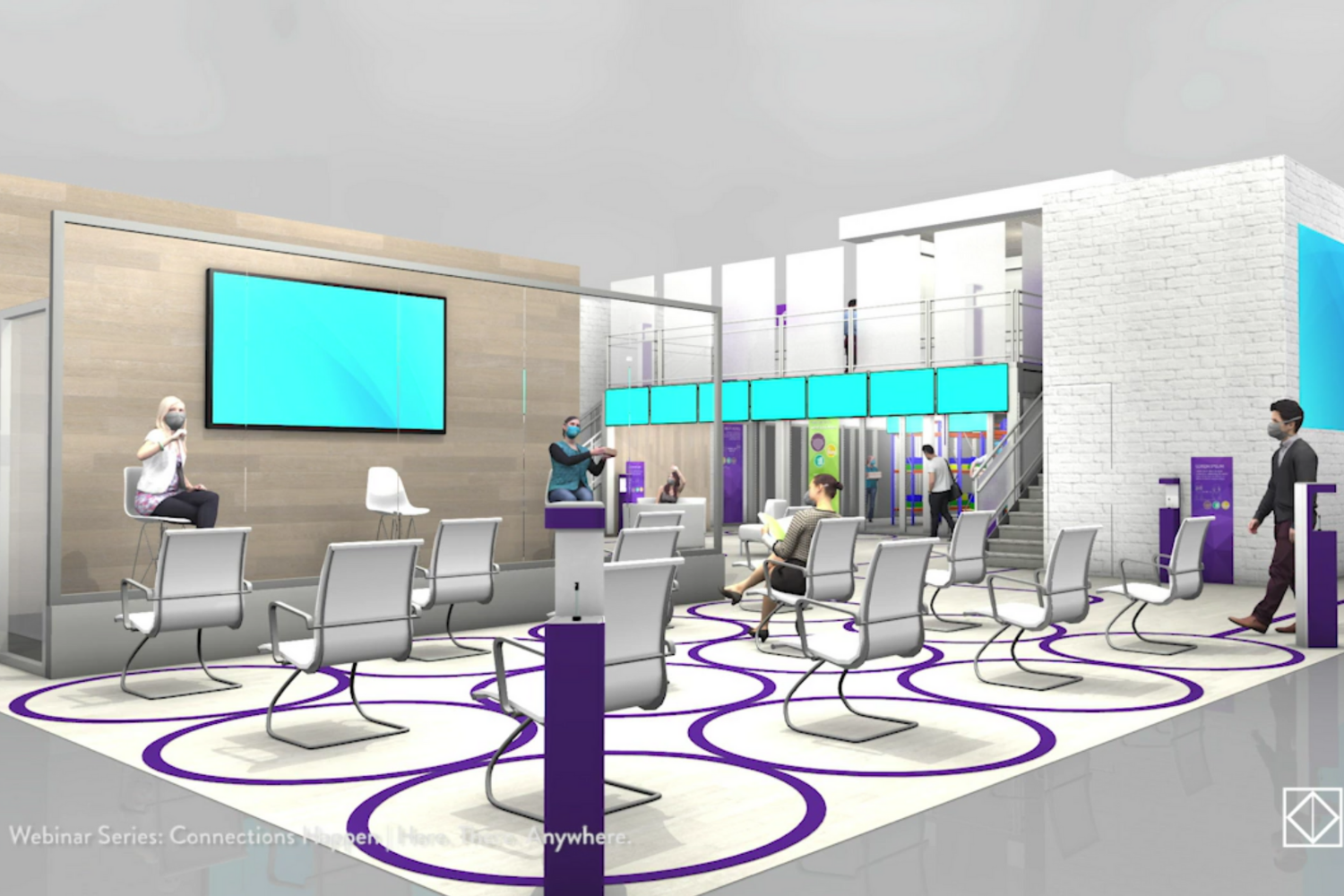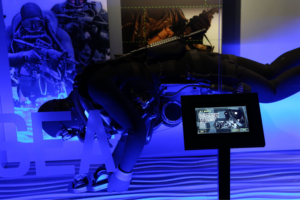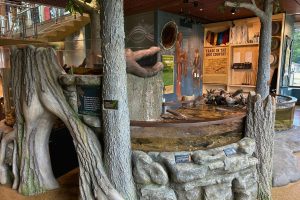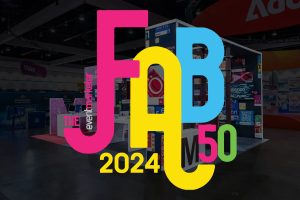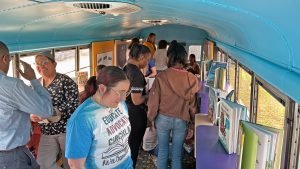As there are glimmers on the horizon that large-scale face-to-face trade shows, conferences, meetings, and events may return this year, there seems to be universal expectation that many (if not all) of these events will have a “hybrid” element. But what exactly does that mean? And what steps should marketers take to prepare for a hybrid event?
From our perspective, as a company that designs, builds, and manages trade show stands for a host of clients across numerous industries, prior to 2020 when we spoke of a “hybrid,” we meant a booth was constructed with a mix of client–owned property and rental property. Typically, our clients own some exhibit property (i.e. demo stations, informational kiosks, conference rooms, and reception desks). But even in these situations, they would often rent some components from us or the general contractor (such as wall panels, double decks, or tables and chairs).
Fast-forward to the COVID-19 era and hybrid is taking on a whole new meaning. Hybrid is now defined as any physical, in-person “live” event that includes a “virtual” online component. That virtual component could be live-streamed keynote presentations or a completely virtual environment replicating the event or booth experience.
As it turns out, hybrid events and the term “hybrid” in the meetings and events context have existed for well over ten years. Virtual event platforms first came on the market in the mid-1990s and while there was initial interest, exhibitors and attendees alike, found the limitations of the early generation products were too great. Devastating events such as 9/11 and the Great Recession led to decreases in corporate travel and reductions in marketing budgets which, in turn, led some teams to incorporate or switch to online events. Some found a successful model such as Siemen’s Healthcare IT user conference. However, the majority found the ongoing limitations too significant to overcome and so they stayed focused on in-person events.
Fast-forward to 2020. With the complete shutdown of any in-person event, marketers have had to turn to other tactics to reach their intended audience. And virtual is one of the go-to tools in the toolbox. With ongoing corporate travel bans, attendees leery to travel, and many businesses cutting their budgets, attendance at in-person events, even when they return, is expected to be significantly reduced, perhaps by as much as 50% for many months. So, the hybrid model becomes the method to reach the in-person audience and those who remain at home.
Many show organizers offered a completely digital experience for their 2020 and early 2021 events. As they look to later in the year and into next year, they are talking about hybrids to reach that non-traveling audience. However, the virtual component is live-streamed or on demand educational content and a virtual “booth” where the exhibitor can post content and engage with a visitor via chat or a break-out room.
So, thinking from the perspective of the exhibitor and moving from a passive to active and in control mindset, the virtual “online” component of the event, is only limited by the marketer’s imagination. Most often, when thinking about a hybrid event, what initially comes to mind is live stream from the trade show floor. This can have a “man on the street” interview quality but the environment – lighting, ambient noise, and bystanders – can make for a poor user experience. A variation on this idea is to live-stream special presentations and demonstrations from the booth. But again, production quality will be a challenge.
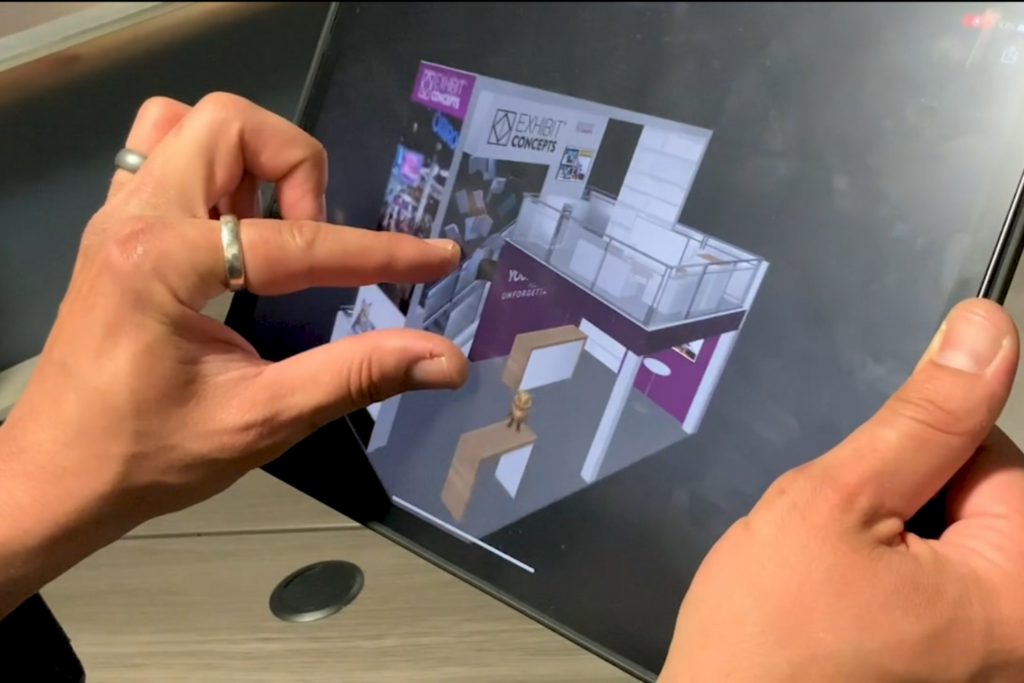

Thinking more imaginatively, you could develop a virtual 3D trade show event that is a companion to the live trade show. An attendee can “move” through the booth, launch content, and interact with booth personnel avatars. To make the events seem collaborative, set up an overhead camera to live stream attendees attending in-person and safely interacting. The video stream could be made available on a custom microsite with the 3D booth and other relevant content.
These examples typically start with the in-person event and then brainstorming occurs to think of tactics to incorporate a similar experience to a remote audience. But what if you thought about the events in tandem? What if your remote audience was interacting in a way that was posted or broadcast live in the booth? For example, the results of a virtual poll could be posted live in the booth. Remote audience members could be streamed into the booth to ask their questions rather than the other way around.
And should you think way out of the box…where is it written that these events need to take place at the same time? One of the beauties of the virtual “online” component is that the marketer is not restricted to specific days and show hall hours or rules. The virtual component can take place before, during and after the live event.
As with any event, what’s most important in your planning is that you start with clear objectives and a keen understanding of your personas…both those attending in-person and those attending remotely. Pay attention to their frame of mind and environment. What do they already know about your product and what are they hoping to learn? What do you have to offer? What does an ideal interaction look like to your company and what behavior are you hoping to motivate?
Design your hybrid event thinking about the in-person and the digital experiences together, rather than one attempting to replicate the other. Think outside the proverbial “box”. Going hybrid gives you the flexibility to extend your reach, to extend the duration of your event, to reach audiences that you might otherwise not reach. Is it more work? Sure. But do not think of it as planning two separate events. Think of it as one event with more components. Doing so will help to ensure that your messaging and experience are on-brand and on-point for your audience.



